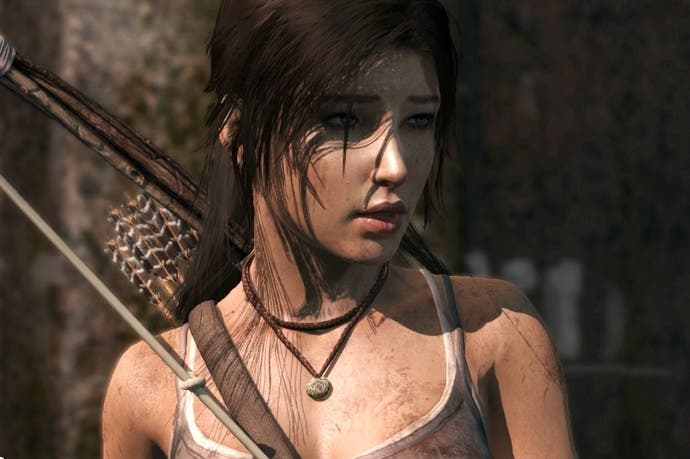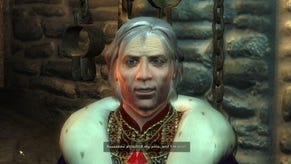Face-Off: Tomb Raider
Uncharted territory.
| - | Xbox 360 | PlayStation 3 |
|---|---|---|
| Disc Size | 7.3GB | 13.2GB |
| Install | 7.3GB (optional) | - |
| Surround Support | Dolby Digital | Dolby Digital, DTS, 5.1LPCM, 7.1LPCM |
We approached Tomb Raider with some degree of anticipation: we looked forward to a cross-platform game that could challenge the untouchable Uncharted series in terms of technical accomplishment, character development and gameplay. We wanted Sony first-party quality rolled out across multiple platforms without compromise, with additional "must-have" next-gen features built into an enhanced DirectX 11 PC version of the game. While the end-result doesn't quite match the polish of the latter entrants in the celebrated Naughty Dog trilogy, in most respects Tomb Raider more than meets our lofty expectations. If you're an Xbox 360 owner who's never played Uncharted, this Lara Croft reboot may come as something of a revelation and for PS3 gamers, Crystal Dynamics' effort should more than tide you over until Nathan Drake makes his inevitable return.
However, for Tomb Raider purists there are other concerns, specifically that the new approach adopted by the developer may not be quite to their tastes. The make-up of the new game leans heavily toward character development and cinematic action rather than the more traditional, puzzle-centric adventure that sees Lara left to explore the world around her at will. In truth, the new Tomb Raider occupies a middle-ground between the older games in the series and Naughty Dog's efforts, while also taking influence from the Lost TV series. The core exploration aspect is side-lined in favour of dramatic set-pieces and gunfights, while the logic-based puzzles make far more sense than the arbitrary ones found in the early Tomb Raider games, although there are fewer of them. Despite the radical design change, the reboot still delivers plenty of thought-provoking exploration as Lara makes her way through the beautifully realised environments. Straying off the beaten path reveals extra tombs that contain puzzling gameplay elements more in-line with what fans would expect from a Tomb Raider game, all delivered in a new, state-of-the-art game engine.
The question is, has Crystal Dynamics replicated that level of technological achievement across all major HD platforms? Our head-to-head video - backed by a triple-format comparison gallery - reveals some noteworthy differences between each platform, particularly highlighting the gap in sharpness and clarity between them. However, it's the inclusion of the new TressFX PC hair-rendering technology that provides the biggest difference, so we'll kick off with a PC vs. console comparison.
"TressFX marks the arrival of an ambitious hair-rendering technology on computer. Sometimes phenomenal, often unintentionally hilarious, this is clearly first-gen stuff but promising regardless."
Alternative comparisons:
With regards to image quality Tomb Raider renders natively in 720 on both consoles, but it's clear that the presentation on the 360 isn't always quite as sharp and striking as its PS3 and PC counterparts. Images appear softer on the platform with the intricate artwork smoothed over to a higher degree, while shadow detail appears to be crushed in amongst the darkness. The use of different post-process anti-aliasing implementations between platforms appears to be the cause, along with a very low gamma set-up on the 360 that often creates dim images without some serious adjustment.
The PS3 presentation features sharp and smoothly defined edges and texture quality never takes a hit to any noticeable degree, with fine details coming through unscathed on small objects situated far from the camera. Lara's world appears pristine despite featuring plenty of run-down gritty locations. It's a stark contrast compared to the sometimes murkier look of the 360 game, where a stronger edge-detection algorithm smooths over the more subtle aspects of the artwork as it does the jaggies. In brighter, higher contrast environments, the levels of detail are similar on both consoles and the blur on 360 is lifted. Due to the use of a lower gamma set-up, the darker image of the 360 game has the effect of accentuating the blurring properties of the post-AA in some scenes.
From the look of things the anti-aliasing method used in the 360 appears to be a less refined version of the FXAA implementation found on the PC. On the computer version, we find images are sharper than on 360, and with more resolved fine detail, but not quite to the same level we see on the PS3. Of course, this disadvantage is eradicated when running the game in higher resolutions such as 1080p, where the extra pixel precision helps to greatly limit the impact of any texture blur while use of some higher resolution textures bring out yet more intricacies from the artwork.
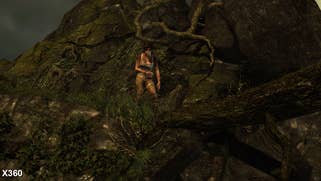
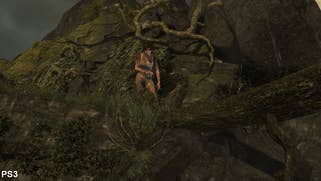
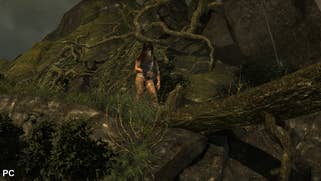
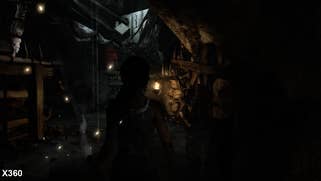

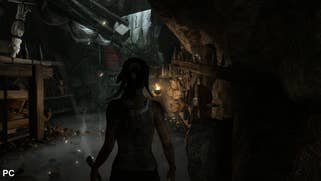

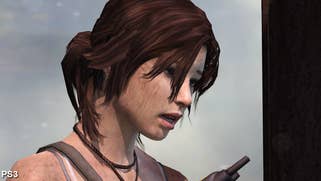
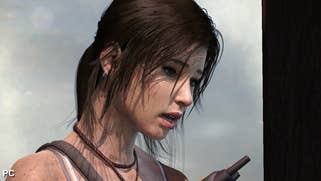

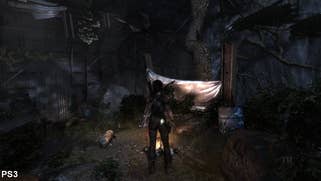
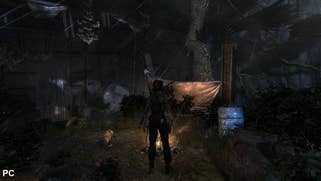
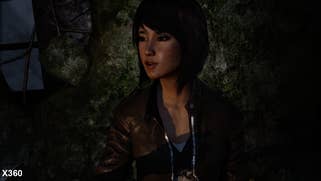


Moving beyond image quality concerns, it's clear that Tomb Raider is a visually striking release that features plenty of attention to detail in both the characters and the environments. Lara's world is rendered superbly across all three platforms, featuring plenty of natural beauty in the form of rocky alcoves, lush forests and snowy mountainous peaks. These are also joined by gritty man-made underground tunnels, abandoned temples and run-down World War II bunkers now occupied by hostile island inhabitants.
The range of locations helps create a foreboding landscape full of wonder, and also hides plenty of danger along the way in the form collapsing bridges, burning buildings and tunnels that threaten to leave Lara buried alive. Some of the most exciting gameplay come from these set-pieces, although carefully navigating less treacherous terrain is equally satisfying, if not more so when stealthily evading the oppressive island inhabitants. There's not much in the way of differences between consoles here: the level of anisotropic filtering is a tad higher on the PS3, and shadows also appear slightly cleaner on that format, while foliage appears more chunky and less distinct on the 360 due to the heavier post-process blur. Screen-space ambient occlusion (SSAO) also adds an extra layer of shadowy depth to the scenes, with differing implementations between consoles and the PC.
Lara's environment is rendered in higher quality on the PC, where the use of higher resolution textures and normal maps on some surfaces are joined by better anisotropic filtering, adding yet more detail to the lush organic landscapes on offer. Tessellation, which provides various objects with a large geometry boost when moving closer to the camera, is used extensively throughout the game on many surfaces to give these a smoother, more refined look. The effect is also used on Lara herself, especially noticeable in carefully rounding off her fingers during cut-scenes as she grips various objects. These features appear more lifelike and convincing when combined with how Lara herself interacts with the environment, helping to better immerse the player in the experience.
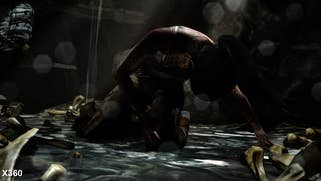

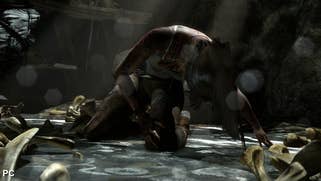


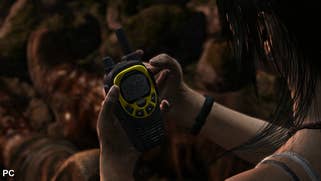
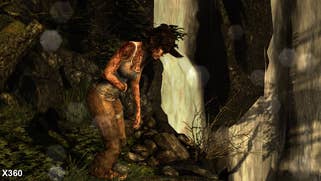
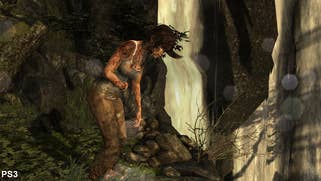
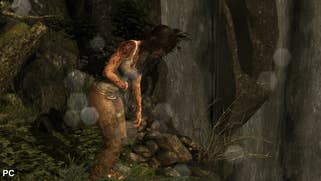
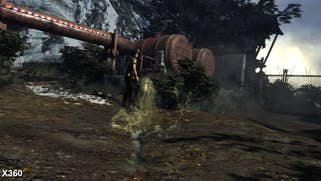

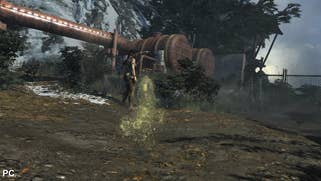
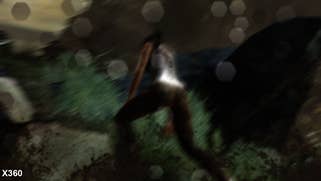


Lara moves confidently through her surroundings on all platforms. Animations appear both smooth and natural, even if the overall effect isn't as convincing as those found in Naughty Dog's Uncharted games, which use advanced animation blending systems to create realistic movements that appear more nuanced and realistic. Object and camera blur is used to enhance the cinematic look the developers are clearly aiming for, with the 360 and PC versions featuring a higher precision version of the effect. Lara is also well-modelled, with the character taking on a more natural look compared to previous games. The change in appearance goes some way to help create a stronger connection between the player and the character than we've seen in prior games; subtle facial expressions are used to convey a range of emotions - initially fear and self doubt, but as the game progresses we see anger, relief and confidence develop.
Crystal Dynamics' goal in creating a more believable Lara Croft is taken one step further on the PC version through the use of advanced hair simulation in the form of TressFX. Collective strands of hair appear to be rendered as strips of polygons, while a compute-based physics system divides these into linked chains that can be affected by forces such as wind and gravity.
The effect can be convincing in slower scenes with little movement, bringing out more human characteristics in Lara's face, which in turn helps to create a better emotional hook between the player and the character. However, this implementation features some highly inaccurate physics that causes Lara's hair to react unnaturally around strong winds and during fast moving scenes, thus breaking the illusion and introducing some unsightly shadow artifacts.
In the here and now the use of these effects on PC provides us with an early look at what we might expect to see from next-generation console titles in the future. Potentially, we could see a more refined version of TressFX become a widely-used tool in video game creation, similar to Havok becoming the standard in physics middleware this generation. But what we see in Tomb Raider with TressFX is first-gen stuff - a tantalising statement of intent not realised in a convincing manner, with some unintentionally hilarious effects.
"TressFX rendered hair may not quite live up to its billing, but the PC version remains the best rendition of the game regardless, shining at 1080p60."
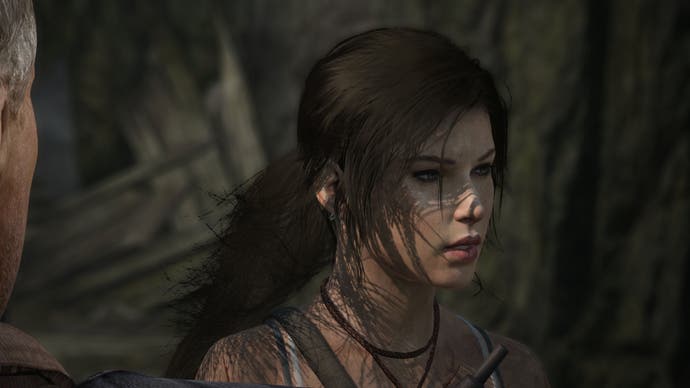
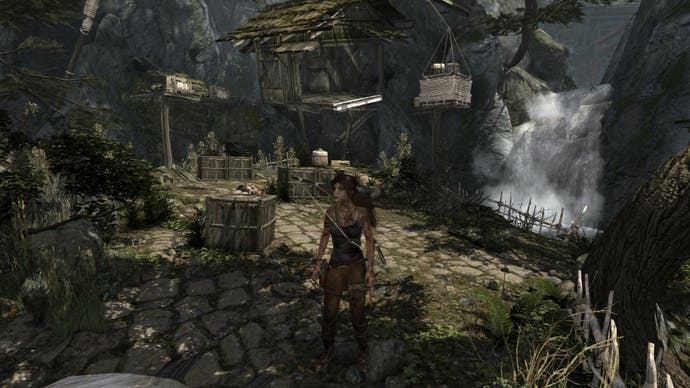


Tomb Raider: performance analysis
As we've come to expect from most titles this generation, Tomb Raider adopts a 30FPS update on both console systems, and similar to the latter Uncharted games we see v-sync fully engaged, completely eliminating screen-tear. The consistency of the visuals actually helps to preserve the cinematic look the developers are aiming for, although it does mean frame-rates are heavily impacted when the engine is under stress, rendering complex scenes featuring multiple enemies and a large number of alpha effects - smoke, fire and foliage for example.
During gunfights in the affected areas we find the 360 game more steadily adheres to the 30FPS target with the PS3 version lagging between 2-4FPS behind, although drops are still visibly present on Microsoft's system. This is most noticeable during one scene where Lara is trapped in the woods and must fend off a pack of wolves using her bow, and also in areas that feature long draw distances. However, in scenes that feature the inclusion of multiple destructible light sources, the PS3 game holds up with more performance.
The loss in smoothness results in a noticeable dip in controller response when frame-rates are more severely affected on both systems. Button presses and turns of the analogue sticks feel heavier as a result. It's worth noting that the 360 also suffers from these issues in the same scenes, and frequently both versions are evenly matched with slight variances in how the game is being played responsible for the different metrics than any real, tangible performance issues.
"Both console games dip from their target frame-rates, but it's clear that the Xbox 360 version holds on more tightly to its target update."
Like-for-like footage taken from the real-time cut-scenes shows more of a 360 advantage in a few scenes, with less of an impact in performance on the platform. Overall, Crystal Dynamics' engine appears well optimised across all platforms, and despite a few heavier drops during more demanding scenes, the action frequently remains smooth with only a few dips in frame-rate when traversing the environment. Even during some of the large scale set-pieces we find performance is rarely compromised, with a near solid 30FPS active on both systems. In fact, we see slightly higher frame-rates in one section on the PS3, showing that the varying rendering load is having more of an impact than raw hardware differences do in other areas.
On the PC the ability to run Tomb Raider at 60FPS makes a huge difference to how well the game plays. Lara moves about the environments smoother, the controls feel tighter and more responsive and the action generally looks and feels that much more polished as a result. Establishing this level of polish does mean making a few graphical tweaks for users not running the game on higher-end graphics cards, but it's worth it.
Performance is impacted when using both tessellation and AMD's TressFX hair simulation, in which we see large dips in frame-rate in more detailed areas of the game when there is extensive movement of Lara's hair. While we had generally no trouble in getting a steady 60FPS at 720p when using our Core i5 and Radeon 7870 combo, achieving similar results in 1080p meant turning off both tessellation and TressFX, and even disabling v-sync. There's also the issue of the game performing quite poorly on Nvidia cards at the higher quality settings due to the current drivers not being optimised for the title. However, the GPU manufacturer is currently working on an update to resolve this issue. Given the frequency of Nvidia driver updates, we shouldn't have to wait long. The good news is that performance scales well across a range of CPUs - performance is interchangeable across virtually any modern quad-core processor from the Core i7 920 onwards. Even the latest Ivy Bridge dual-core CPUs perform well. AMD's range of four, six and eight-core processors also do the game justice.
"Tomb Raider is well optimised for its target platforms. While 360 has the overall lead, PS3 manages to nose ahead in certain areas."
Tomb Raider: the Digital Foundry verdict
Overall, Tomb Raider comes across as another successful additional to the franchise, rebuilt around exciting set-pieces and polished gun play that flows far more smoothly than in past titles. However, the heavy focus on story and character development limits the amount of freedom the player has to explore the wonderfully detailed environments scattered throughout the game, with complex puzzles and exploration taking a back seat to segments of stress-free climbing and a heavy focus on combat. This change in direction allows the player to better connect with Lara and the horrific events that occur throughout her bleak adventure, although it means the experience is often far removed from what constitutes a Tomb Raider game, instead borrowing heavily from Naughty Dog's Uncharted series. That said, the inclusion of extra tombs to discover and explore - complete with more complex singular puzzles - clearly shows that some core Tomb Raider DNA exists in this cinematic reboot, even if the developers have chosen not to integrate these segments into the main story.
The game's biggest success is the close connection between Lara and the player, achieved by combining the personal struggle of the character with big action scenes, which are then broken up with moments of solitary exposition in the wilderness as we see Lara quickly transform from a vulnerable young woman into something approaching the confident adventurer we have come to expect. On the PC this connection is enhanced by the use of more advanced technology - Lara is rendered in a more natural, human-like manner and while TressFX has some fundamental flaws, when it works properly, that effect is heightened still further. Meanwhile the improvements made to the visuals in other areas help to create a more refined looking game, one that is a clear step above the console releases - especially if your PC can pull off a sustained 1080p60 or better.
The console versions of Tomb Raider are still thoroughly recommended though. Despite some performance issues on both systems when the action is situated in more complex environments, the game manages to stick closely to the desired 30FPS update with only momentary lapses that impact the quality of the gameplay. While the 360 offers up slightly more consistent overall performance, for the most part the difference between the two games isn't significant, and it's also fair to say that the PS3 holds the advantage with regards to image quality and the general refinement of the overall presentation. This is a game where much of the experience is built around the spectacle and in that respect, PS3 offers an advantage of its 360 sibling. Aside from various instances where performance is visibly lower, the gameplay is otherwise just as enjoyable on Sony's system, and the sharper visuals better suit the overall feel of the game, highlighting the richness of the environments without as many unwanted side-effects. In that respect the PS3 version gets our recommendation as the preferred choice of the two console releases.
